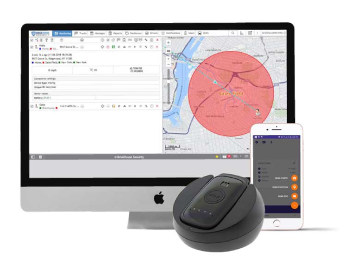Role of GPS Tracking and Panic Buttons for Lone Workers
Key Takeaways:
- GPS tracking and panic buttons are crucial tools for ensuring the safety of lone workers, allowing employers to monitor locations and quickly respond to emergencies.
- GPS devices provide real-time location data, while panic buttons alert authorities or designated contacts in case of danger.
- These tools reduce risks associated with working alone, offering features like motion-sensing alarms and safe zones.
- Implementing these safety measures can prevent injuries or fatalities and ensure accountability for workers in remote or isolated locations.
![]()
As an employer, you’re responsible for the safety and wellbeing of your workers, even if they’re out on a job site alone and out of sight. GPS tracking devices can monitor the whereabouts of a worker, and a panic button allows them to call for help in the event of an emergency. GPS trackers and panic buttons are designed to alert designated individuals or authorities to the location of the emergency.
There are many possible designs and uses for GPS trackers and panic buttons, and they are incredibly helpful for the safety and accountability of anyone who is working alone or in a remote location.
How Do GPS Trackers Work?
![]()
GPS technology has grown exponentially in the last several years. It has the incredible ability to provide direction and location for users—something that would have been unimaginable a few decades ago! Panic buttons and safe zones are available for tracking devices, enabling safety for many users, including employees who work alone.
Devices with GPS technology is connected to a system of 24 satellites that broadcast radio signals from space. The device using GPS gathers information from these signals and creates a location. Then, it can send that location to an external monitoring system that tracks or reports the information.
How Can GPS Devices Improve Lone Worker Safety?

With GPS tracking, management is able to understand the daily movements of a lone worker, and the information available from these devices means that workers can swiftly report emergency issues. Traditionally, workers have used a check-in method where workers or supervisors check in at timed intervals, but GPS technology improves this process.
Each device has its own features, and workers can activate motion sensing alarms for use when incapacitated or use panic buttons on the device for instant response during a crisis.
Some real time GPS trackers also give workers the ability to communicate with colleagues and call a limited number of phone numbers for use in non-crisis situations, eliminating the need for other cell devices. Some devices provide a stream of constant information about where the worker is, and lack of communication can indicate emergencies, including unconsciousness due to injury, accident, or violence against the worker.
How Can a Panic Button Help a Lone Worker?

Panic buttons are useful for any worker, but particularly those who are working alone. Lone workers are at high risk in the workplace because they have no coworkers or supervisors around to help in the event of an emergency. Up to 2 million American workers are faced with violent situations in the workplace each year, most of which go unreported. Having a panic button gives workers the ability to call for help in the event of a crisis. Nearly one-fifth of fatalities in the workplace are the result of violence against workers, and many could have been prevented with the use of a GPS location device equipped with a panic button.
Panic buttons alert authorities or a chosen individual to the current location of the device when pressed. Each device is a little different, but some need to be pressed for a certain number of seconds to activate. The device will then send out a text or email to the necessary individuals, informing them of the alert and even providing directions to the location. The alert will continue to go out until it’s deactivated at the source.
Some devices are also equipped with the ability to create a “safe zone”. If the device leaves the designated safe zone, an alert is sent out similar to when the panic button is pressed.
Each of these precautions is designed to keep workers safe and prevent injury or even death.
Choose to Protect Your Lone Workers

When it comes to protecting lone workers, it is important to remember that you have as much responsibility toward them as employees that are on the job site every day. Lone workers are at a greater risk of injury and need to have systems in place to ensure their protection. If you have lone workers in the field whose safety is your concern, we invite you to contact our team today. Our experts are always available to answer your questions about lone worker safety, GPS tracking, and panic button alerts. At BrickHouse Security, we’re here when you need to know
Posted by Todd Morris on Apr 3rd 2024

